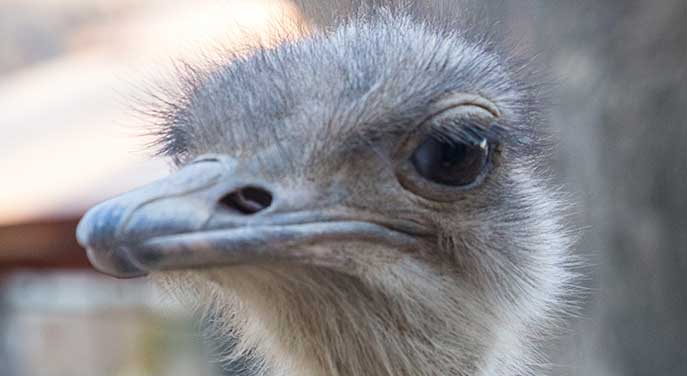It’s one of the most enduring craft traditions in human history, stretching back 50,000 years: tiny donut-shaped beads made from ostrich eggshells.
They reveal the oldest social network ever identified, according to a study by Jennifer Miller.
The beads probably originated in eastern Africa and spread west and south through the continent as people traded them for other goods or gave them as gifts, said Miller, a University of Alberta PhD graduate in anthropology.
As groups across the region formed alliances, the beads likely evolved to convey symbolic messages.
“It was a way to possibly show social status, wealth or position in society, or to convey some sort of information,” said Miller, now a post-doctoral fellow at the Max Planck Institute in Germany.
“The idea of having social connections across such a huge distance is not something people had suggested before,” said Miller. She added that while genetic evidence points to contact between certain groups in Africa, until now there has been scant cultural evidence to back it up.
Miller’s study, published last month in Nature, provides one more piece to the puzzle of early human social contact, she said, showing “how groups in the region came together and separated, leading to the cultural and genetic diversity that we see today.”
Uncovering this ancient social network was a massive and arduous undertaking, she added.
Miller began the project as a U of A master’s student in 2009 when she noticed a gap in the archeological record. Beads had been examined from a very small region of southern Africa over a small time frame, but there was evidence the beads had also existed elsewhere over a much larger time frame.
By the time she began her PhD, the project had grown into an Africa-wide, sub-Saharan study on a scale never done before. It was clear she had to travel to Africa to hunt for evidence, which might not even exist.
But she had no travel funding. “Funding agencies tend to prefer the next sexy excavation,” she said. So she saved her money, enlisted her mother as research assistant and headed off on the trip of a lifetime.
“I sat in the airport waiting to go on a trip I was paying for myself – one nobody else believed in. I was crying and thinking, ‘What am I doing? I can’t believe I’m doing this. Is this stupid?’
Miller travelled to museums in three countries in southern Africa and had samples from eastern Africa sent to her by colleagues who had some in their collections. She painstakingly examined beads from more than a dozen sites, looking for subtle variations in craftsmanship and design.
Also using evidence in existing literature, she attempted to find a pattern among 31 sites between eastern and southern Africa.
“It was three months measuring beads in the backroom of museums for as long as they would let us stay,” said Miller. “But I was then terrified to process the data. For about a year I didn’t touch it because I was worried it would show nothing, or some sort of totally random pattern.”
When she did finally look at the data, she hit pay dirt. “I’m really glad that it paid off; whenever I have doubts about things now, I think back to that time.”
One gap remained in the record that cried out for more illumination, said Miller – a 3,000-km stretch between eastern and southern Africa where no bead data is available.
Her co-author on the paper, Yiming Wang, came up with a climate solution to that enigma. Flooding of the Zambezi River catchment between eastern and southern Africa about 33,000 years ago – an event called the Intertropical Convergence Zone – disrupted the social network for about 14,000 years.
“We suspect that, in the future, more archeological finds will be uncovered. And perhaps there will be more beads, and this can add to the story and refine some of these details,” said Miller.
The main significance of the study, she stressed, is that it establishes a new way of shedding light on the human story.
“This is a totally new and independent way to study a question that’s been traditionally studied through fossils or ancient DNA. By paying attention to it – and possibly to other kinds of artifacts – we can discover new ways to learn about the origins of our species.”
| By Geoff McMaster
Submitted by the University of Alberta’s Folio online magazine. The University of Alberta is a Troy Media Editorial Content Provider Partner.
© Troy Media
Troy Media is an editorial content provider to media outlets and its own hosted community news outlets across Canada.


